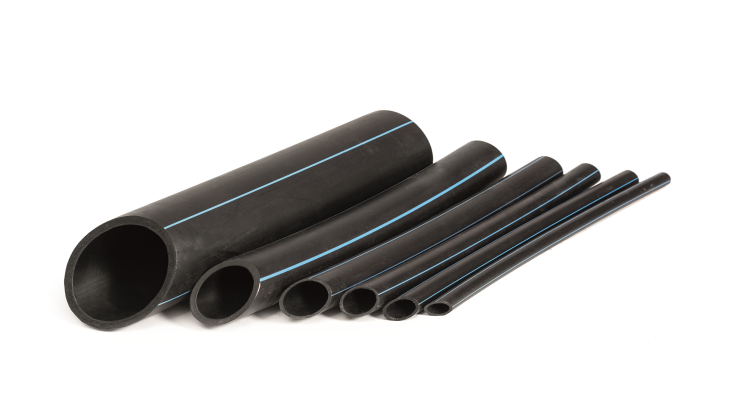The Problem with Plastic: #1 Manufacturing Defects
Manufacturing defects, fluctuations in part quality, and the manufacturing ‘black box’ are a few pain points that plastic part producers face in their day to day. Not only do these challenges limit productivity, but they can also be costly and energy inefficient.
To help plastic manufacturers combat these difficulties, our new blog series ‘The Problem with Plastic’ aims to provide actionable solutions to optimize plastic part production. This first article tackles the issue of locating the cause of errors, process deviations and material defects, which often lead to unaccepted parts.
Our upcoming articles will address problems with process stability and quality assurance, so keep an eye on our Resources page to learn how to combat your manufacturing challenges.

Plastic Production Today
Laboratory-based simulations representing material characterization, modeling, and process outcomes are standard in the plastics industry. These simulations allow manufacturers to set up their production processes with the aim of yielding acceptable plastic parts. Taking the simulations and practically applying them calls for a skilled workforce that understands processes and the impact of surrounding conditions on material behavior.
Nevertheless, even the most experienced workforce or manufacturers can fall victim to defects that impact their products’ quality and acceptance rates.
Examples of Manufacturing Defects
Defects in plastic part manufacturing can take various forms, depending on the types of materials and processes used. The most common types of defects, specifically in plastic molding, include:
Warping:
Also called plastic warpage, warping is a defect caused by, among other things, unfavorable temperature conditions, excessive cooling, or pronounced orientation of the fillers. This leads to the inadvertent bending or twisting of the part, making the part disfigured and unsuitable for further use.
Sink Marks:
Sink marks are indents that may appear on the surface of a part and can also be caused by inconsistent shrinkage or cooling. This is one of the most common defects in injection molding. Other factors that can cause sink marks include:
- Using designs that are incompatible with the plastic, with, for example, mass buildup or cracks in the wall thickness,
- Unsuitable mold designs,
- Inadequate process control, such as insufficient packing pressure.
These defects are mostly aesthetically problematic and do not typically impact part function and strength.
Flash:
Flash is a defect that happens when excess material escapes a mold, solidifies, and creates an extra layer on the surface of the plastic part. Several factors that lead to flash include damage to the parting line of the mold or poor mold design, excessive internal pressures when filling the cavity, or insufficient clamping pressure. This defect also impacts the aesthetics and functionality of plastic parts.
Voids and Shrinkage Cavities:
Voids and shrinkage cavities are bubbles or air pockets that form within the plastic part due to poor material flow, inadequate venting or cooling, and inferior mold design. As long as there is no non-plastic part design, the defect can usually be avoided by improving the process parameters. Voids seriously affect the strength and durability of a material and make it highly susceptible to fracture.
Contamination:
A contaminated part is another defect that might occur. Contamination transpires when contaminants, or foreign substances, become trapped in the material during molding. Contaminants can be dirt, excess moisture, and more. Complete cleaning of the machine is required when contamination occurs.
Challenge #1 Locating Errors, Deviations, and Defects
With limited insight into what happens inside a mold or during part processing, it becomes difficult to immediately determine in-situ if any deviations are occurring. Therefore, production errors, manufacturing defects, and material deviations are only discovered in post-process quality assurance (QA) testing.
Typically, when errors, defects, or deviations are discovered, a major consequence is production downtime. During this time, an extensive inspection of production parameters is conducted to locate the cause of the error. The time it takes to determine the cause, amend the error, and recommission the production line is often lengthy. Obstructed productivity goals, increased costs and energy use, and time-consuming manual labor are all drawbacks caused by manufacturing defects.
Addressing the Problem
Fortunately, tools and technologies are in place to combat the difficulties in locating the cause of errors, defects, and process deviations. The solution all comes down to one thing: process transparency. More specifically, in-mold transparency that supplies manufacturers with insight into material behavior. With this kind of information, processors are empowered to adapt their processes immediately and adjust any perceived deviations accordingly.
Our sensXPERT Digital Mold by NETZSCH Process Intelligence GmbH is a technological solution designed to make strides in in-mold transparency. You can read all about this process control solution here. Regardless, sensXPERT comes with dielectric sensors that you can install directly into the mold. Resultingly, processors have a visual insight into material behavior, the impact of process parameters, and process outcome predictions. In-situ, anytime, location-independent access.
On top of their extensive knowledge, machine operators can use this technology to dynamically adjust their processes and avoid manufacturing defects, deviations, and errors.
In this article, we addressed the problem of manufacturing defects in plastic part production. However, the plastics industry faces other challenges in its processes. In the following two articles on the ‘Problem with Plastic,’ we will discuss process stability and quality assurance issues and ways to combat them. Stay tuned.